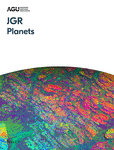Recent publications from John Scofield, Professor of Physics, and Christina Smith, Visiting Assistant Professor of Physics, as reported in Web of Science
Scofield, John H., Brodnitz, S., Cornell, J., Liang, T. and Scofield, T. 2021. Energy and Greenhouse Gas Savings for LEED-Certified US Office Buildings. Energies.
From the abstract: [Here]we present results from the largest study of measured, whole-building energy performance for commercial LEED-certified buildings, using 2016 energy use data that were obtained for 4417 commercial office buildings... Only LEED offices certified at the gold level demonstrated statistically significant savings in source energy and greenhouse gas emissions as compared with non-LEED offices.
Energies is a peer-reviewed, open access journal from MDPI, "a pioneer in scholarly open access publishing".
Smith, Christina L., Lemmon, M., Moores, J. E., et al. 2020. The Line-of-Sight Extinction Record at Gale Crater as Observed by MSL's Mastcam and Navcam through similar to 2,500 Sols.
Journal of Geophysical Research-Planets 125: e2020JE006465.
From the abstract: [Finding based on monitoring by Mars rover Curiosity]... Extinction as a function of azimuth and elevation angle were investigated and the extinction as a function of azimuth was generally found to be smooth and thus the dust well-mixed horizontally. The extinction as a function of elevation shows increased dust loading at lower elevations during dusty seasons, indicative of dust lifting from the base of the crater.
JGR-Planets is one of dozens of journals published by the American Geophysical Union, accessible in the Wiley Online Library.






















